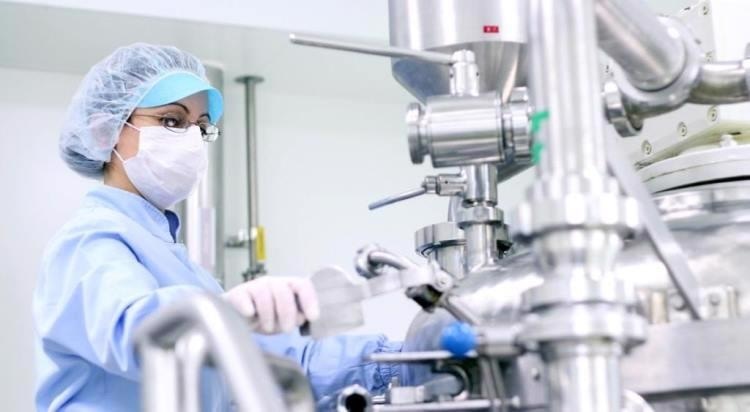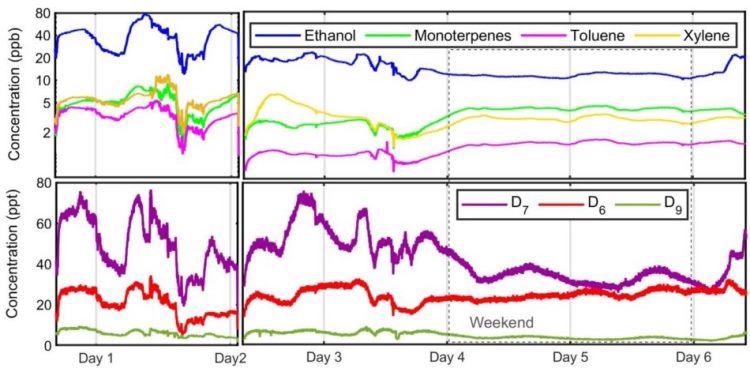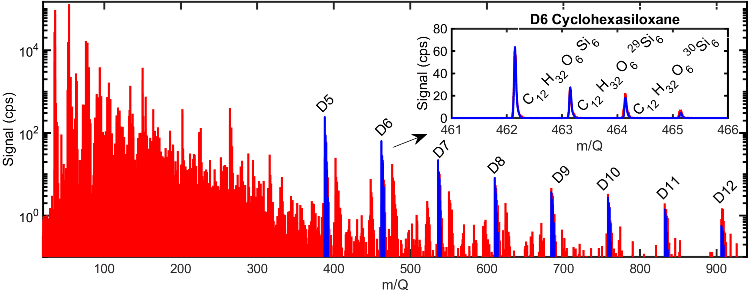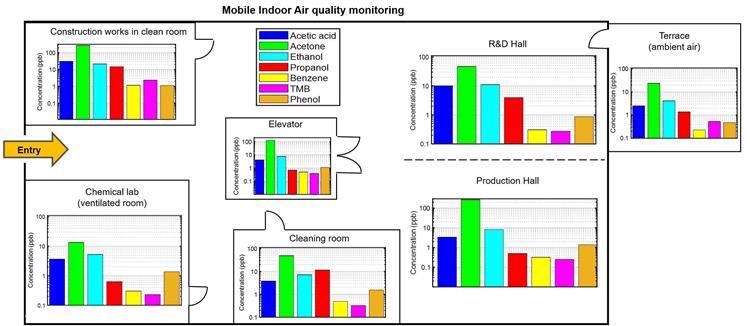In order to monitor the indoor air quality of a working environment, a Vocus CI-TOF was placed in an industrial facility for 2 weeks. Accurate identification of targeted species is provided by the high resolving power of the TOF mass spectrometer together with various soft ionization modes, whilst the portability of the instrument allowed for measurements within a short period of time in various indoor areas.

Image Credit: TOFWERK
Indoor Air Quality
As we know, most people spend the vast majority of their time indoors, whether at home or at work.
Indoor air quality is essential for almost all people, especially since it affects people’s health, work performance, and comfort. Thousands of volatile organic compounds (VOCs) are present in indoor air, emitted largely by volatile chemical product usage, construction materials, or industrial processes1.
VOCs can accumulate and adversely affect health or contaminate sensitive working environments due to the large wall surface area, building insulation and/or non-sufficient building ventilation. The World Health Organization (WHO) considers air pollution – including indoor air- as one of the top five risks to public health2.
To identify human exposure to potentially dangerous levels of indoor air contaminants, and improve poor indoor air quality by better understanding and identifying the pollutant sources, real-time monitoring of VOCs is essential.
Vocus CI-TOF: Real Time Measurement of Indoor VOCs
A fast, sensitive, and robust instrument able to monitor hundreds of VOCs in the air at the same time at sub ppb concentration the Vocus CI-TOF can provide accurate identification of targeted species, and has a high resolving power of the TOF mass spectrometer together with various soft ionization modes.
No sample preparation is required as the air is measured directly, in contrast to commonly used sorbent tube GC-MS sampling. GC-MS sampling is offline, much slower, and requires sample preparation.
The instrument was placed in the TOFWERK R&D and production facility for two weeks to monitor the time evolution of the indoor air species present in a working environment.
Both traditional proton transfer reaction (PTR) and NH4+ mode were used to operate the instrument, allowing for less fragmentation and targeting more oxygenated species.

Figure 1. Figure 1 displays the PTR-mode measurement of monoterpenes, ethanol, toluene, and xylene (top panel) as well as several cyclosiloxanes (bottom panel) over a week-long period in an industrial facility. Image Credit: TOFWERK
Figure 1 displays an example of PTR measurement of the chosen common indoor air pollutants.
Industrial activity and working hours can be linked to the 24h patterns in the concentration, with higher concentrations during the day and lower concentrations at night. The concentration is reduced by factor 2-5 during the weekend. Figure 2 displays a mass spectrum of indoor air measured by the Vocus CI-TOF in NH4+ mode.
Simultaneously, hundreds of species are detected, which range over three orders of magnitude in concentration. There is a clear pattern of siloxanes which are observed up to 900 m/Q. It was possible to measure D12 siloxane (C24H72O12Si12) quantitatively, with an average mixing ratio of a few ppt.
Widely used in plastics, oils, cosmetics and lubricants, siloxanes are highly stable and volatile chemicals that are used as additive ingredients. A common compound found in urban air and associated with personal care products, the most intense siloxane observed was dodecamethylcylcopentasiloxane (D5) 3. The specific isotope pattern of siloxanes can be used to confirm their elemental composition as Vocus CI-TOF measures the whole mass spectrum simultaneously.

Figure 2. Figure 2 displays the mass spectrum of indoor air which is measured by the Vocus CI-TOF in NH4+ mode. A blue highlight has been used to show the series of siloxanes commonly present in an industrial environment. Image Credit: TOFWERK
Mobile Indoor Air Quality Measurement
The VOC levels in various indoor areas can be investigated within a short period of time because the instrument is portable. This, therefore, means that such measurements can offer useful information on possible leakage or contamination. The results of mobile measurements performed with the Vocus in different parts of the industrial hall within 30 minutes are shown in Figure 3. Shown on a log scale, the concentrations can vary by a factor of 5 -10, which depends on the area being measured.
The lowest VOC levels were found in the rooms with active ventilation (e.g., Chemical lab), and these levels were comparable to ambient air. High levels of propanol (presumably from the cleaning and disinfectant chemicals stored inside) were found in the cleaning room. In general, the highest concentration of VOCs was found in the clean room where painting and construction works were taking place.

Figure 3. Figure 3 displays the concentration of selected VOCs on a log scale which were measured in six separated industrial areas during mobile measurement. Image Credit: TOFWERK
References
- Mcdonald, B. C. et al. Volatile chemical products emerging as largest petrochemical source of urban organic emissions, Science 359(6477): 760-764, 2018. doi: 10.1126/science.aaq0524
- World Health Organization, “Ten threats to global health in 2019”, Newsroom Feature Stories, https://www.who.int/, date of last access 7 May 2020.
- Coggon, M. M. et al. Diurnal Variability and Emission Pattern of Decamethylcyclopentasiloxane (D5) from the Application of Personal Care Products in Two North American Cities. Environ. Sci. Technol, 2018. doi: 10.1021/acs.est.8b0050

This information has been sourced, reviewed and adapted from materials provided by TOFWERK.
For more information on this source, please visit TOFWERK.